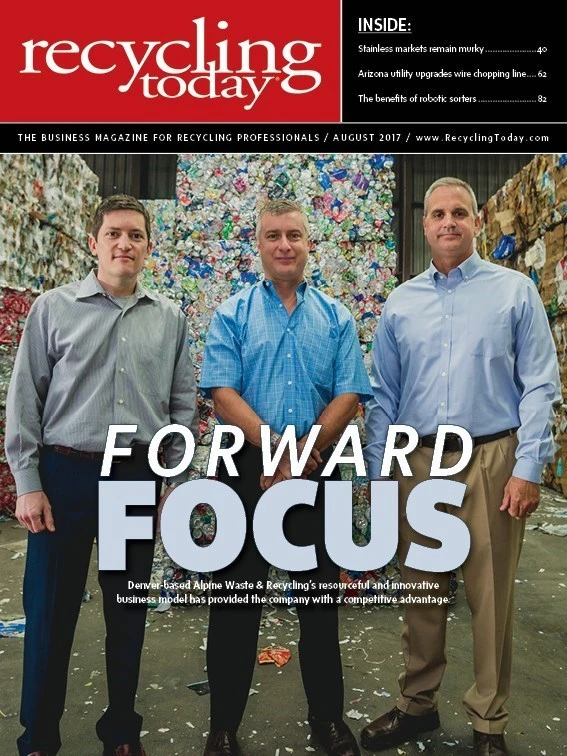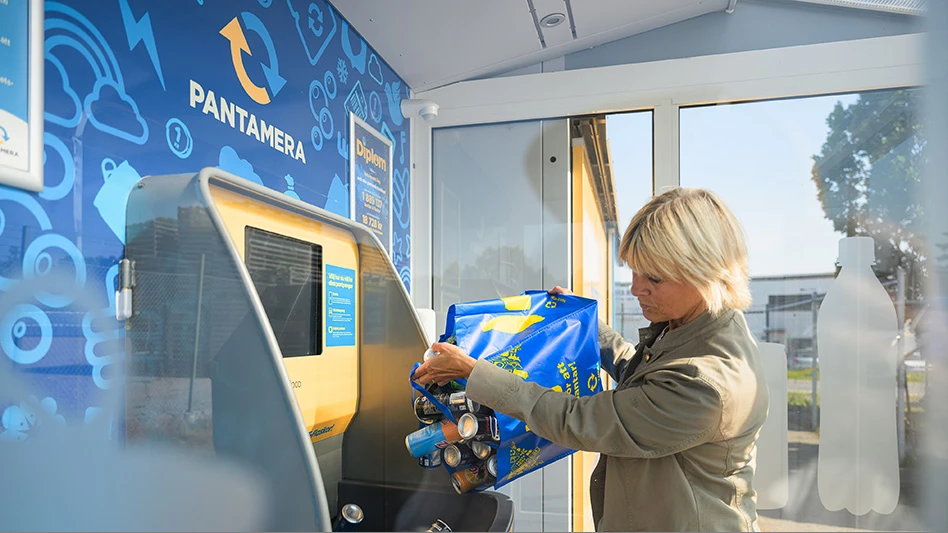
Salt River Project (SRP), a public power utility headquartered in Tempe, Arizona, is one of the nation’s largest public power utilities, providing electricity to 1 million customers in central Arizona. It is one of two major power utilities serving Arizona.
As the utility upgrades existing customers, it generates old wire and cable, including MCM (thousand circular mils) underground, triplex,
Focusing on recovery


SRP established its Investment Recovery department in 1986, says Matthew Lovelady, the department’s current manager. Investment Recovery sells, refurbishes or recycles materials to optimize the return on SRP’s assets and to divert materials from landfills, the utility explains on its website, www.srpnet.com.
“The department’s main objective is to extend the life of SRP’s retired assets and equipment while reducing operating cost for the organization,” Lovelady says.
Investment Recovery has 20 employees who support the operations in various capacities, including material handlers and working foremen who focus on processing incoming material.
To help achieve Investment Recovery’s objectives, it first installed what Lovelady calls “a very small-scale chopper” in 1998. Prior to this installation, Investment Recovery sorted wire by type to be sold to local scrap vendors.
“The manager at the time heard about or saw a wire chopping machine at a trade show and thought this could be a great addition to the portfolio of work performed by the department,” Lovelady says. “He viewed it as an additional revenue stream to help offset the organization’s operating cost.”
In 2002, the utility upgraded to a “production-scale” system, he says.
The move improved the revenue SRP saw for its wire and cable and also gave it more product oversight, Lovelady says.
“We are one of two departments in the company that
Adding capacity
From May 2016 through February of 2017, SRP processed 1.44 million pounds of cable, producing 753,600 pounds of aluminum and 268,000 pounds of copper. A recent equipment upgrade will help the utility process more cable in addition to improving the quality of the aluminum and copper chops it is producing and reducing metal loss to jacketing material.
In March of this year, SRP completed this upgrade to its wire processing system with the help of equipment supplier Sweed Machinery Inc., headquartered in Golden Hill, Oregon.
“Some of the machine components were near the end of life and needed to be replaced,” Lovelady says of the processing line the utility installed in 2002. “We decided at that time to make some enhancements to increase our capacity.”
According to Sweed, the line it installed for SRP is one of the largest it has ever built and represents a considerable increase in processing capacity for the utility. The new system also enables SRP to bulk feed the processing system, while its newer technology offers improved efficiency and separation, increasing the percentage of copper and aluminum it recovers, Sweed says.
With the upgrade, Lovelady says SRP repurposed its main shredder, a Sweed PC1200, into a
- an infeed chopper (Model 5703 AG XHD from Sweed), which can process a range of sizes and types of linear materials, including ACSR;
- an MS3669 low-speed shredder equipped with multiple knives;
- a granulator;
- two air tables, including a new fines air table, to sort low-density material from
high-density material; - a sifter table to sort material by size;
- two magnetic cross-belt separators; and
- an air filtration bag house.
Additionally, SRP replaced all the system’s conveyors.
“We also reinstalled our old infeed chopper in another building to process bare aluminum cable only,” he says.
Sweed Sales Director Kevin Gordon says, “As far as commissioning, we had Sweed folks on-site at different times for about three weeks. We were hired to supervise the mechanical install and equipment
He adds, “There was a great deal of engineering work done on the front end of the project to assure we could place new and relocate existing equipment into a very tight space.”
With the new installation, Lovelady says, “We’ve been able to increase the overall machine capacity.” He estimates that it’s roughly a 15 to 20 percent increase based on SRP’s initial assessment.

The new system also allows SRP to process smaller control cable, which Lovelady deems a “major benefit.” Prior to this upgrade, he says, “The smaller control cable was being bid in a competitive environment and sold by the pound.”
SRP also has benefitted from the addition of the fines air table. “Adding the ‘fines’ air table has increased our ability to remove metal
The Investment Recovery division of SRP operates its wire chopping line three to four days per week, depending on its workload, he says. While Lovelady says he hopes SRP will process more cable this year with the upgraded equipment, he adds, “Unfortunately, it is difficult for us to project a true annual amount. We are at the mercy of the field crews and preventive maintenance schedule. We will run/process as much material as possible, but our goal is to improve our yield every year through equipment and process improvements.”
The copper chops SRP produces are put out for bid on the open market and purchased primarily by local vendors and smelters, Lovelady says, while the aluminum chops are transported to a smelting operation in Phoenix. “We have an agreement with the smelting company to provide them with aluminum on a weekly basis to help fulfill their business requirements,” he says.
Thanks to the higher quality of the chops it’s producing, SRP’s new wire chopping line is helping the utility’s Investment Recovery department achieve its mission with improved efficiency and profitability.
Get curated news on YOUR industry.
Enter your email to receive our newsletters.

Explore the August 2017 Issue
Check out more from this issue and find your next story to read.
Latest from Recycling Today
- Nucor expects slimmer profits in early 2025
- CP Group announces new senior vice president
- APR publishes Design Guide in French
- AmSty recorded first sales of PolyRenew Styrene in 2024
- PRE says EU’s plastic recycling industry at a breaking point
- Call2Recycle Canada, Staples Professional expand partnership
- Circular Services breaks ground on north Texas MRF
- Tariff uncertainty results in choppy nonferrous scrap flows







